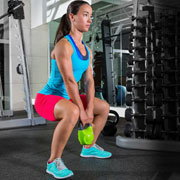LEARN ABOUT YOUR PAIN, UNDERSTAND HOW YOU INJURED YOUR BODY, AND DISCOVER HOW OUR OFFICE CAN HELP. Once static strengthening is mastered, dynamic strengthening is necessary to improve function and stability.

Exercise rehabilitation follows these principles: reducing pain, restoring range of motion, stretching restricted tissues, and progressing to specific strengthening. These steps lead to movement retraining and dynamic/ballistic activities, with each step following its own protocol.
Dynamic strengthening focuses on the strength curve of large muscle groups, such as the arms, legs, and back. Muscles work through eccentric and concentric phases, and the effectiveness of strengthening depends on the timing of transitions and the muscle’s full contraction.
By approaching exercise movements in this way, greater strengthening results can be achieved with less joint irritation and maximum functional improvement.
The first goal is to reduce pain. While exercises can help address the pain, they are typically used after the hands-on approach to restore function.
SUMMARY OF EXERCISE PROGRAM GOALS:
The key is to thoroughly evaluate the patient to determine which exercises are appropriate. The goal of the exercise program is to guide the individual from basic restorative movements in a supine or prone position to dynamic movements that can be integrated into daily activities, ultimately improving their function and quality of life.
The first goal is to reduce pain. Exercises can help address the pain, but they typically follow the hands-on approach to restore function. The exercises needed to restore function are tailored to the individual but generally follow a progression toward a pain-free, independent, and dynamic phase.
Exercise protocol begins with non-weight-bearing exercises to restore muscle activation and range of motion in a controlled, foundational way. Next, we progress to weight-bearing exercises, followed by a more specific program that may include sport-specific training. Once the patient is pain-free and has restored mobility, we can focus on their individual goals and needs.
Within the weight-bearing progression, we move through static, dynamic, and ballistic movements, starting with double-leg support and progressing to single-leg support. Our exercise programs and equipment are designed to guide patients through these phases. Typically, patients reach the double-leg dynamic exercises, which enable them to perform daily activities. For athletes or highly active individuals, skillful double-leg and single-limb ballistic exercises are necessary. Through these phases, we use a variety of exercises and equipment to incorporate dynamic movements that lead to lasting functional improvements.
